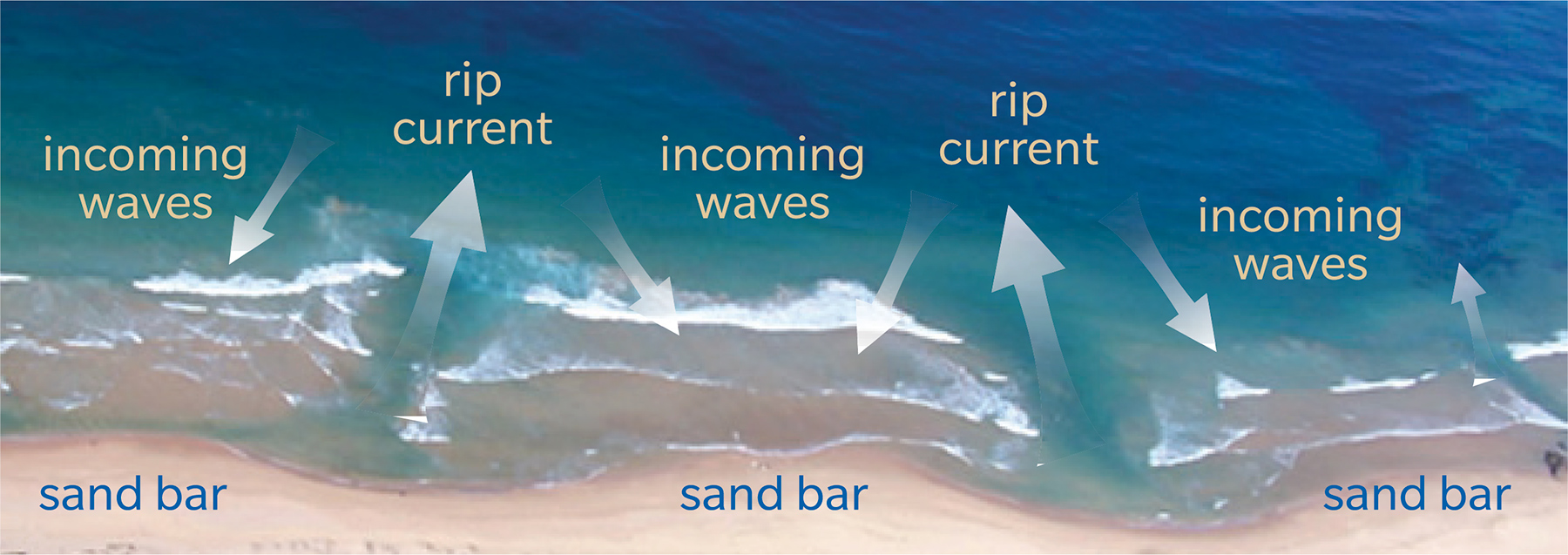Rip currents are one of the greatest, and most common, hazards on Australian beaches. On average, rip currents are responsible for at least 21 drownings deaths in Australia each year. In addition, lifeguards perform countless rescues each and every year to assist swimmers who have been caught in rip currents.
There are many myths about the ocean, but rips are the number one hazard on Australian beaches. Avoid rips by swimming at a patrolled beach between the red and yellow flags.
We’re drawing the line on rips to make you stop and think before getting in the water. STOP to check for rips. LOOK for other dangers. PLAN how to stay safe.
There are many myths about the ocean, but rips are the number one hazard on Australian beaches. Avoid rips by swimming at a patrolled beach between the red and yellow flags.
The key signs to look for are:
Can you spot a rip? Rips can change shape and location quickly and may be difficult to see. Watch this video to learn how to identify a rip and what to look for.

We’re drawing the line on rips to make you stop and think before getting in the water. STOP to check for rips. LOOK for other dangers. PLAN how to stay safe.
If you’re caught in a rip current, stay calm, conserve your energy and consider these options:
Derek shares his story of how a rip changed his family and his life forever.